To distill precious perfume oils, you'll need specialized equipment including a 45000W tubular heater, extraction tank, and vacuum evaporation chamber. Control temperatures carefully – fresh aromas require 40-50°C while heavier scents need more heat. Use fractional collection for superior purity, especially with delicate materials like rose petals. Store your finished oils in dark glass bottles away from light and heat. Understanding these key elements will transform your distillation process from basic to professional-grade.
Essential Equipment Setup for Perfume Oil Separation
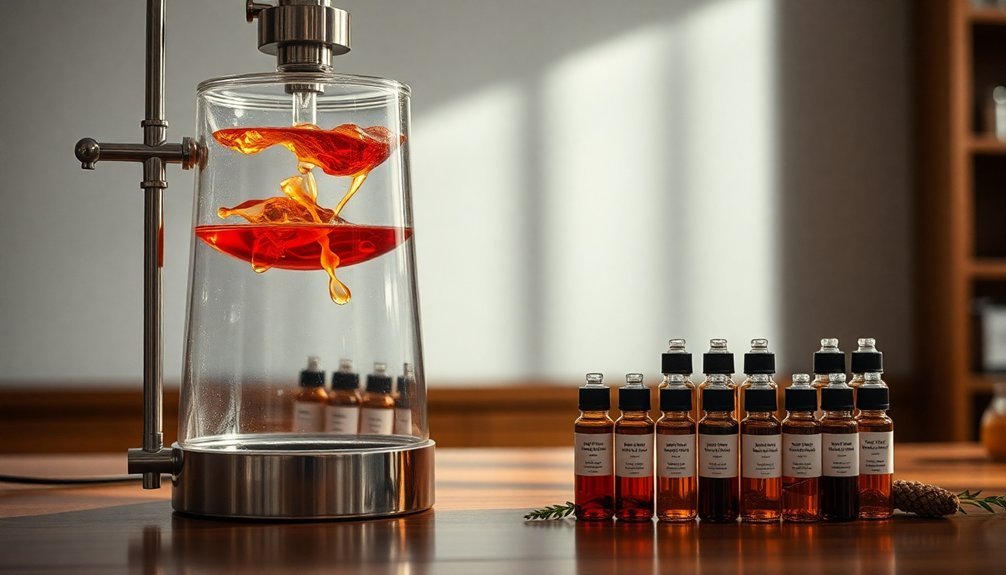
The proper equipment setup for perfume oil separation requires four essential component groups: extraction and heating, evaporation and condensation, separation and collection, and control and safety systems.
You'll need an extractor with a powerful 45000W tubular heater to separate fragrances from raw materials. The three-decker insulation system maintains consistent temperatures throughout the process. The extraction tank has a 0.15m³ capacity for optimal processing volumes.
Your evaporation chamber should maintain a vacuum degree of 0~-0.08MPa, while the condenser requires cooling water at 3t/h with pressure under 0.3Pa.
For separation, you'll rely on an oil-liquid separator and collection vessels to gather the final mixture. Don't forget the control panel to regulate pressure and flow rates, and the electric cabinet to power operations.
Essential safety features include filters and protective gear for handling hot steam and concentrated oils.
Steam Distillation Process and Temperature Control
While steam distillation may seem complex, mastering temperature control is vital for extracting high-quality perfume oils.
You'll need to heat water to generate steam, which passes through your plant material and vaporizes the aromatic compounds. As the steam and oils travel through the condenser, they'll cool and return to liquid form.
You can adjust the pressure in your still to lower the boiling point, which is important when working with heat-sensitive materials. For fresh aromas, you'll want to maintain temperatures around 40-50°C, while heavier aromas may require higher heat. To ensure optimal condensation, maintain your cooling pipe water temperature at 4 to 10℃.
Different plants need specific temperatures – for instance, ylang-ylang requires fractional distillation at varying temperatures to produce different oil grades.
Remember to monitor your temperature continuously to guarantee peak extraction and preserve the oils' potency.
Fractional Collection Methods for Pure Extracts
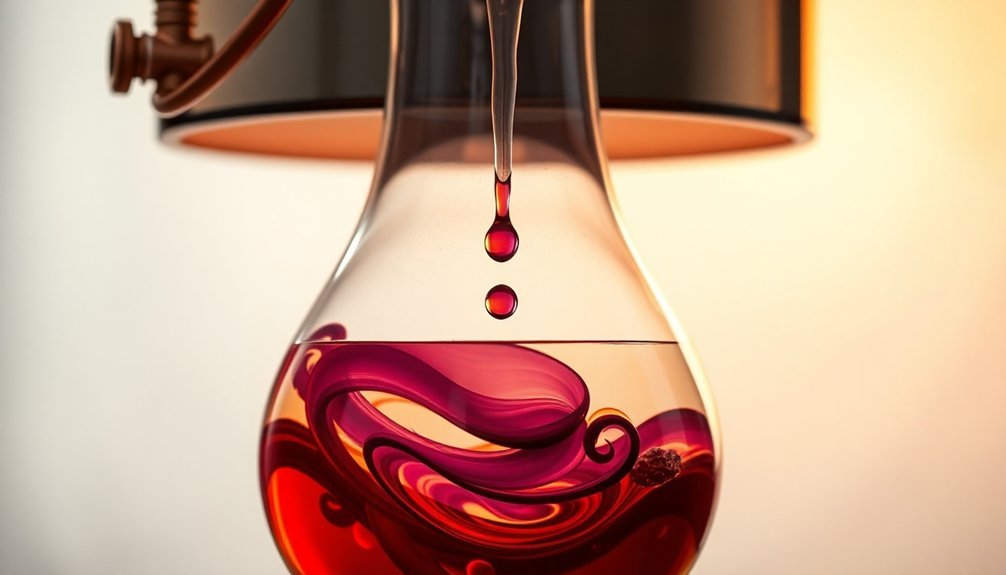
Building on the principles of temperature control, fractional collection offers a more refined approach to obtaining pure perfume extracts.
You'll find this method particularly effective when you're working with delicate materials like rose petals or specialized bark extracts, where traditional steam distillation isn't suitable. Essential oil extraction through steam distillation originated in Persia, revolutionizing the perfume industry.
When you're using fractional distillation, you'll achieve superior purity through a precise heating and condensing process.
Here are the key advantages you'll gain:
- You'll obtain 100% pure oil without steam interference
- You'll separate complex components based on specific boiling points
- You'll preserve the natural scent profile more accurately
This method excels at handling materials that require exact temperature control, especially when you're working with flowers like roses, where you need 4,500 kg of petals to produce just 1 kg of essence.
Quality Testing Your Distilled Fragrance Oils
Once you've completed the distillation process, quality testing becomes essential to guarantee your fragrance oils meet industry standards.
Start by preparing your testing environment with calibrated equipment and proper standards for comparison.
First, examine the physical characteristics of your oil, including its state, label information, and any visible impurities that might require pre-processing through filtration or decantation.
You'll need to measure critical parameters like optical rotation using a polarimeter, specific gravity with a pycnometer, and refractive index using a refractometer.
For thorough analysis, you'll want to employ advanced techniques like gas chromatography and GCMS to verify composition and purity.
Don't forget to conduct TLC testing to detect any unexpected compounds.
Finally, have experienced evaluators perform olfactory assessments to confirm your oil's fragrance profile meets expectations.
Storage and Preservation of Separated Perfume Oils
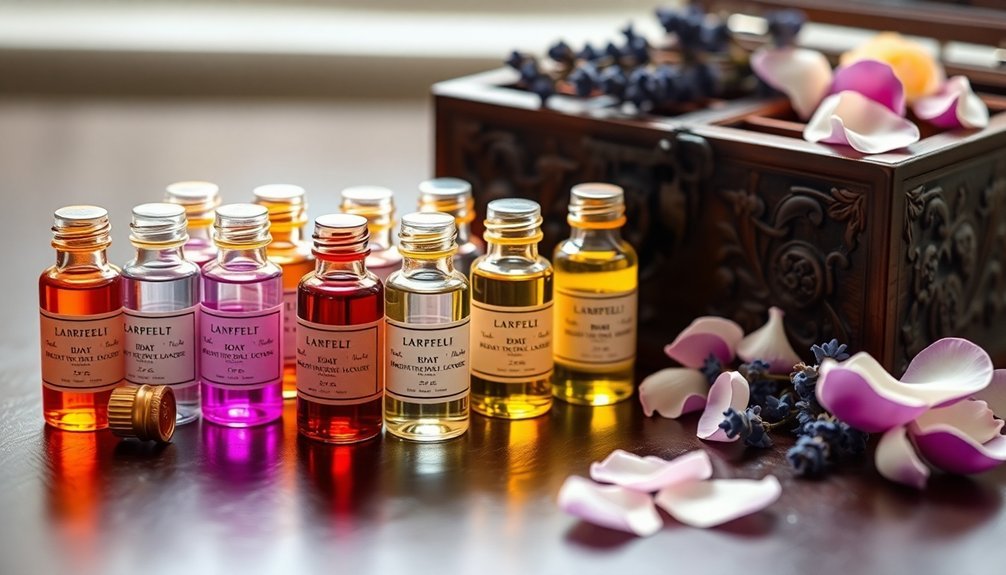
Proper storage techniques are essential for maintaining the quality and longevity of your distilled perfume oils.
You'll need dark glass bottles sized appropriately for your oil quantities to minimize air exposure. Don't use plastic or metal containers, as they can react with your precious oils and compromise their integrity.
Store your perfume oils in a cool, dark place away from direct sunlight and humidity. Your best storage options include:
- A dedicated drawer lined with protective material
- A closet shelf away from external walls and heat sources
- A specialized storage box designed for fragrance oils
Always make sure you're using airtight caps and keeping the bottles tightly sealed after each use.
If you've got partially filled bottles, transfer the oils to smaller containers to reduce headspace and prevent oxidation.
Keep your storage area at a stable temperature to protect your oils' aromatic properties.
Frequently Asked Questions
How Long Can Raw Plant Materials Be Stored Before Distillation Quality Decreases?
You'll need to distill most plant materials within days of harvest for ideal quality. Even with proper dark, cool storage, you'll notice quality decrease after 2-4 weeks due to volatile compound loss.
What Safety Precautions Should Be Taken When Handling Highly Concentrated Essential Oils?
You'll need to always dilute oils with carrier oils, avoid eye contact, store them properly sealed in cool places, wear protective gloves, and do patch tests before use. Never exceed recommended doses.
Can Hydrosols Be Redistilled to Extract Remaining Fragrant Compounds?
You shouldn't redistill hydrosols as it'll degrade their quality. The initial distillation already captures water-soluble compounds effectively, and further distillation won't yield significant fragrant compounds while risking chemical composition changes.
Which Plant Combinations Work Best Together During Simultaneous Steam Distillation?
You'll get the best results combining lavender with geranium or chamomile with ylang ylang. These pairs have compatible oil contents and complementary scents that won't compete during steam distillation.
How Do Seasonal Variations Affect the Yield of Essential Oils From Plants?
You'll get higher essential oil yields in summer when temperatures are warmer. Spring yields are moderate, while winter gives the lowest yields. Water stress can actually boost production, but excessive rain reduces output.
In Summary
You've now mastered the art of perfume oil separation, giving you the ability to create pure, concentrated fragrances at home. With proper equipment, careful temperature control, and systematic collection methods, you'll consistently produce high-quality distillates. Remember to test each batch and store your oils in dark glass containers away from light and heat. Keep refining your technique, and you'll develop a collection of exquisite perfume oils.


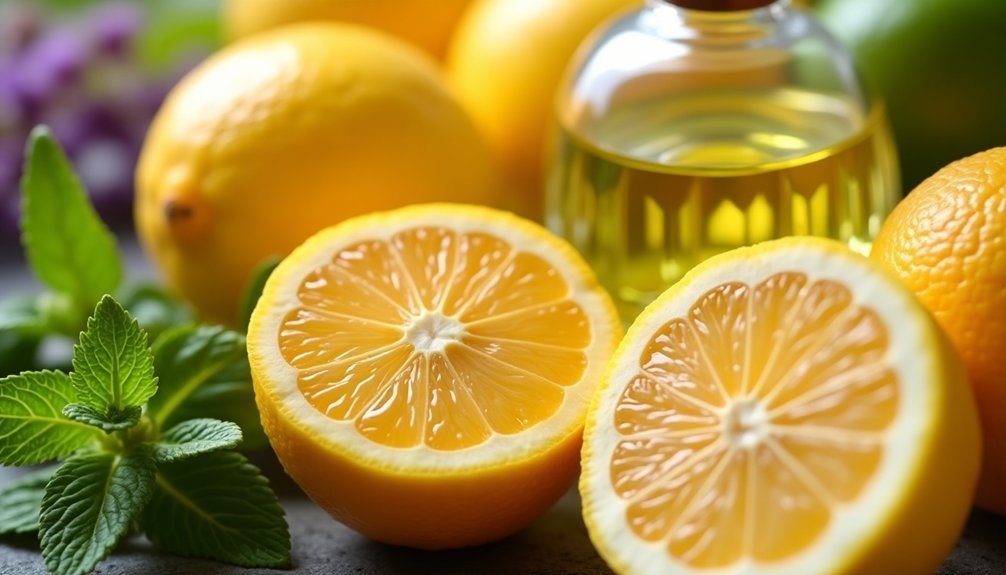
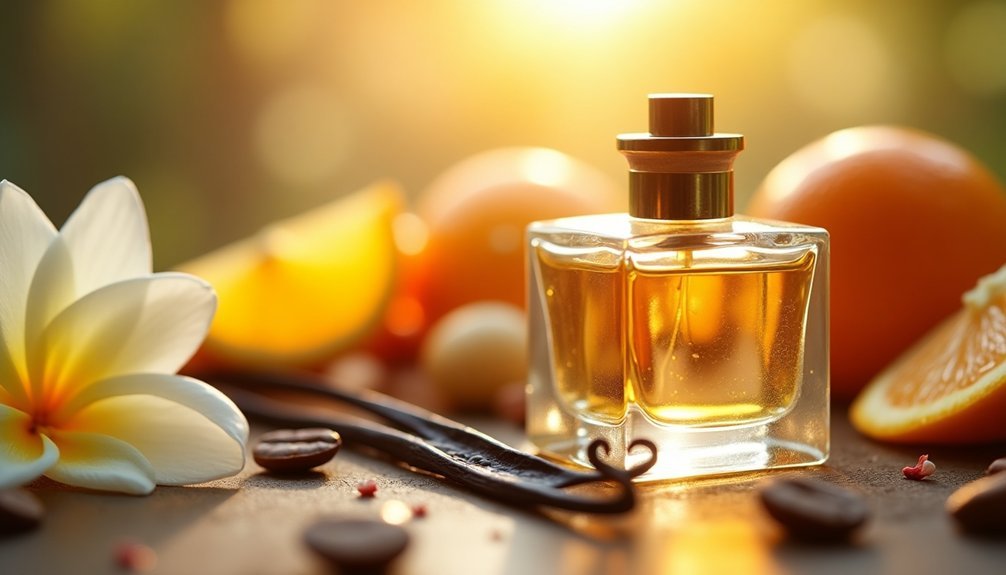

Leave a Reply